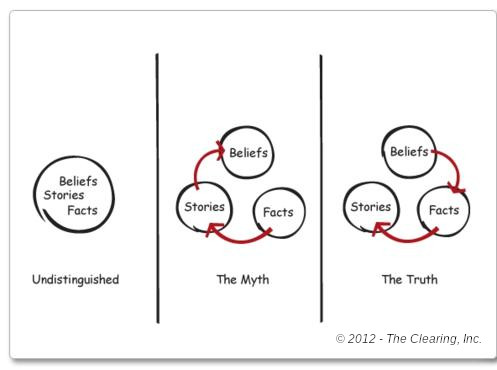What If We’re Wired to Care About Stories More Than Facts?
HNY to you my Bold Friends!
Did you have a good holiday season? Well… maybe the experience was awful.
Like giving birth, the memory is always better.
Think about it—Christmas might have been chaos. Maybe you were frantically wrapping gifts at midnight, refereeing arguments about goodness knows what, or wondering if the turkey was ever going to defrost.
But now, looking back, it doesn’t feel so bad, does it?
What sticks in your memory are the standout moments: a surprise laugh during dinner, your kid’s face when they opened the “big gift,” or the sense of calm when the house finally went quiet.
That’s because your experiencing self—the part of you living through the mess—hands over the reins to your remembering self, which distills it all into a story.
The memory becomes simpler, clearer, and focused on the peaks and the ending.
Memories like this cheeky chap.
So for me on my break away I remember mainly how I felt.
I remember laughing. I don't remember being exhausted or getting ill on Christmas day.
Your brain picks out standout moments and how it ended, then files those as the memory.
When you share data or ideas, the same rule applies: people won’t retain the entire experience.
They’ll remember the peaks, the emotional resonance, and the way you wrapped it up.
The Science Behind Why Stories Stick
McMaster University researchers wanted to understand why stories resonate so powerfully.
Using cool fMRI scans, they discovered that stories activate the brain in ways data simply can’t.
Here’s what they found:
- Stories activate three times more brain regions than facts alone. They light up areas responsible for emotion, empathy, and memory.
- Messages delivered as stories are 22 times more memorable than plain data.
- Stories trigger oxytocin, fostering empathy, emotional connections, and memory retention—public service announcements that increased oxytocin levels saw donations rise by 261%.
Your Brain on Stories. Well, Not Yours, But This Guy’s:
"What am I looking at Alex?" Don't worry - I had no idea either.
A, B, and C: Compare two forms of communication at a time (e.g., speech vs. mime).
D (Yellow Box): Shows areas of the brain activated during all three types of storytelling (speech, mime, and drawing). This is the core "narrative processing" network.
"Researchers found no matter how a narrative is expressed—through words, gestures or drawings—our brains relate best to the characters, focusing on the thoughts and feelings of the protagonist of each story."
So, even if you think you’re being purely rational, stories still influence how you interpret information.
Our brains are just wired that way. If you’re not using stories or bringing in characters, you’re not connecting as well as you could be.
Data isn't enough.
If information was enough, we’d never need meetings, presentations, or pitches. A spreadsheet or email could do the job - and I LOVE a spreadsheet. 🤓
But business isn’t just about information. It’s about influence.
Every time you share data, you’re shaping how people remember it, understand it, and decide what to do next.
You’re already influencing people, even if you’re not doing it intentionally.
How do you know if your influence isn’t landing?
- Clients seem hesitant or disengaged. They ask for clarifications or delay decisions.
- Teams appear unmotivated. Blank stares, resistance, or a lack of alignment could mean your message isn’t resonating.
- Stakeholders focus on risks instead of opportunities. It might mean your pitch didn’t connect emotionally or frame the data persuasively.
Ok, So How Do I Use Stories to Shape Decisions?
Here’s how to apply the science of storytelling in your next conversation, pitch, or meeting:
-
Find the Human Element
Data doesn’t live in a vacuum—it impacts people. Who is the character in your story? Is it your client? Your team? A customer? Make them the focus.- Example: Instead of just sharing growth numbers, tell the story of a client who used your solution to overcome a challenge and succeed.
-
Create Emotional Peaks
Highlight the tension, the turning point, or the triumph. This is what makes the story stick in your audience’s memory.- Example: Share the moment a team faced a tough decision and turned it around—or when a customer experienced a breakthrough.
-
Frame the Ending with Action
Wrap up your story with a clear takeaway or call to action. Leave your audience inspired and ready to act.- Example: "This team increased efficiency by 20% using this strategy. What could we achieve with it here?"
Your Bold Behaviour Challenge 🧪
This week, take one opportunity where you’d normally just share information and turn it into a story:
- For Clients: Make them the hero and ask them what their aiming for, and whats standing in their way. Then paint the picture of how you've helped someone similiar.
- For Teams: Replace one dry update with a narrative that celebrates progress or highlights a challenge overcome.
- For Stakeholders: Turn your next pitch into a journey—show the problem, the risks of inaction, and how your solution delivers.
Notice how the room feels different when you shift from presenting facts to sharing stories.
Final Thought
The McMaster study proves that we don’t just listen to stories—we live them. Stories make us feel, connect, and act.
So, next time you’re sharing an idea, don’t just ask, “What do I want them to know?” Ask, “What do I want them to remember?”
Take the challenge. Share your story. And let me know how it goes—I’d love to hear how it resonated!
Ta-ta for now.
Alex
P.S. If you had to choose, would you rather learn how to tell stories that win over clients, inspire your team to take action, or get buy-in for your next big idea?
Reply back and let’s see how I can help you make it happen.
Sunnybank House, Mayfield, East Sussex TN20
Unsubscribe · Preferences


